The Festival of (In)Appropriation #9 Online
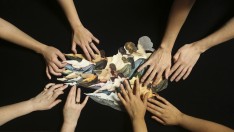
Lying Women by Deborah Kelly
Friday-Sunday, Aug 21-23, 2020
Northwest Film Forum and Los Angeles Filmforum present
The Festival of (In)appropriation #9
Online
Q&A discussion on Saturday Aug 22, 6 pm PST online with Curators Jaimie Baron, Lauren Berliner, and Greg Cohen with filmmakers Roger Beebe, LJ Frezza, Tony Gault, Deborah Kelly, Kevin McCarthy, Ryan Murray, Tasman Richardson, Tina Takemoto, Yunjin Woo !
Whether you call it collage, compilation, found footage, détournement, or recycled cinema, the incorporation of already existing media into new artworks is a practice that generates novel juxtapositions and new meanings and ideas, often in ways entirely unrelated to the intentions of the original makers. Such new works are, in other words, “inappropriate.” This act of (in)appropriation may even produce revelations about the relationship between past and present, here and there, intention and subversion, artist and critic, not to mention the "producer" and "consumer" of visual culture itself. Fortunately for our purposes, the past decade has witnessed the emergence of a wealth of new audiovisual elements available for appropriation into new works. In addition to official state and commercial archives, resources like vernacular collections, home movie repositories, and digital archives now also provide fascinating material to repurpose in ways that lend it new meaning and resonance.
Founded in 2009 and curated by Jaimie Baron, Lauren Berliner, and Greg Cohen, the Festival of (In)appropriation is a yearly showcase of contemporary, short (20 minutes or less), audiovisual works that appropriate existing film, video, or other media and repurpose it in “inappropriate” and inventive ways. This year’s program features an astonishing variety and complexity of moving-image appropriation art, including a riotous YouTube reaction video mash-up, an exquisite found-footage ready-made, a queer-Asian-American homage to Hollis Frampton, several sublime works of cut-out animation, and a pseudo-documentary (or is it?) about the lost work of an early-Soviet scientist dedicated to the exploration of “human mental projection.”
Watch this conversation about Festival of (In)appropriation #8 between Curator Greg Cohen and film scholar Constance Penley at UCSB’s Carsey-Wolf Center (10/27/2016): https://vimeo.com/191083847
Read this review of Festival of (In)appropriation #7 (2015) in Artillery magazine: http://artillerymag.com/festival-inappropriation-7/
Check out this interview by Laura Wissot with curators Jaimie Baron and Greg Cohen in Filmmaker magazine: http://filmmakermagazine.com/84086-the-festival-of-inappropriation-6-at-los-angeles-filmforum/ - .Uv6Qlf0dq89
Tickets: Sliding Scale
Tickets available at Northwest Film Forum, https://nwfilmforum.org/films/festival-inappropriation-9-encore-online/
Visit the Festival of (In)appropriation at https://festivalofinappropriation.com/
Jaimie Baron (Festival Director) Jaimie Baron is an Assistant Professor of Film Studies at the University of Alberta. Her work on documentary, experimental film and video, audiovisual appropriation, and digital media has been published in numerous journals and anthologies. Her first book, The Archive Effect: FoundFootage and the Audiovisual Experience of History, was published in 2014. She is also a co-founder of Docalogue, an online space for scholars and filmmakers to engage in conversations about contemporary documentary.
Lauren S. Berliner is an Assistant Professor of Media & Communication and Cultural Studies at University of Washington Bothell. Her research focuses on participatory media production practices, gender and sexuality, and pedagogy. Also a filmmaker, she has screened her work internationally and has facilitated video production programming for girls and queer youth. She earned her PhD. in Communication from UC San Diego, an MA in Visual and Media Art from Emerson College, and a BA in English and Anthropology from Wesleyan University.
Greg Cohen is an artist, Associate Programmer at Los Angeles Filmforum, and Lecturer in Latin American Cinema and Visual Culture at UCLA. His work in video, photography, and multi-media installation has been exhibited nationally and internationally, and draws on diverse intellectual and aesthetic interests, from landscape theory and aesthetic philosophy to cultural memory and experimental archives, and from the history and theory of architecture to the intersections of moving-image media and radical politics. As a founding associate of REASArch (group for Research on Experimental Accumulation and Speculative Archives), Cohen has also produced The Valaco Archive, an ongoing visual research project (https://valacoarchive.com), parts of which were recently featured in Limn magazine (http://limn.it/).
Roger Beebe is a filmmaker whose work since 2006 consists primarily of multiple projector performances and essayistic videos that explore the world of found images and the "found" landscapes of late capitalism. He has screened his films around the globe at such unlikely venues as the CBS Jumbotron in Times Square and McMurdo Station in Antarctica as well as more likely ones including Sundance and the Museum of Modern Art with solo shows at Anthology Film Archives, The Laboratorio Arte Alameda in Mexico City, and Los Angeles Filmforum among many other venues. Beebe is also a film programmer: he ran Flicker, a festival of small-gauge film in Chapel Hill, NC, from 1997-2000 and was the founder and Artistic Director of FLEX, the Florida Experimental Film Festival from 2004-2014. He is currently a Professor in the Department of Art at the Ohio State University.
LJ Frezza is a proletarian filmmaker with no equity. He makes movies for free that you can watch for free.
Tony Gault is working on a film about language and how it affects our perception of reality.
Deborah Kelly's works have been shown around Australia, and in the biennials of Singapore, Sydney, Thessaloniki, TarraWarra, Cementa and Venice. Her projects across media are concerned with lineages of representation and practices of collectivity from intimate to epic. Kelly’s work has been exhibited at the MCA and the AGNSW in Sydney, MOMA PS1 in NYC, the ICA in London, the Hammer Museum in LA and the Pera Museum in Istanbul. In December 2019 she participated in the Fotogenia Festival in Mexico City (and won the festival prize) and was the first international artist in residence at the Wellcome Trust in London.
Kevin McCarthy's non-fiction films have screened at film festivals internationally. He teaches film and audio production as a member of the faculty at Fitchburg State University in Central Massachusetts.
Ryan Schmal Murray creates conceptually-driven artwork that combines digital and physical media. His work addresses the search for moments of meaning by turning pop-culture media/technology on itself and transforming everyday objects and experiences into subtle psychedelia. Murray was born in Pittsburgh, PA. He received his BFA from Carnegie Mellon University and his MFA from the University of Illinois at Chicago. His artwork has been exhibited internationally in galleries, museums, and film festivals including the New York Film Festival: Convergence, Antimatter [Media Art], and the Chicago Underground Film Festival. He was the recipient of a 2016 Maryland State Arts Council Individual Artist Award for Digital Media. Murray lives in Baltimore, MD and serves as an Associate Professor of Electronic Media and Film at Towson University.
Tina Takemoto’s experimental films explore hidden dimensions of same-sex intimacy in Asian American history. Takemoto has exhibited widely and received grants from Art Matters, ArtPlace, Fleishhacker Foundation, Lucas Artists Program, and San Francisco Arts Commission. Takemoto was awarded Grand Jury Prize for Best Experimental Film at Slamdance and Best Experimental Film Jury Award at AGLIFF. Screenings include Ann Arbor, Anthology Film Archive, BFI Flare, CAAMfest, Outfest, Queer Forever! (Hanoi), and Xposed Queer Film Festival (Berlin).
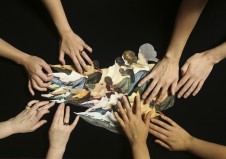
Lying Women
Lying Women
By Deborah Kelly
(Australia, digital video, color, sound 2016, 03:56) “The stop motion animation Lying Women attends both to printed art’s material qualities and its ideological freight. As a high school student in 70s Melbourne, my primary exposure to art history was through the pages of books. I studied the western canon at a triple remove: as a girl, as an antipodean girl, as an antipodean girl who had never seen the paintings except as printed papers’ cheap approximations of European glory. Lying Women imagines canonical reclining nudes’ escape from centuries of servitude to a worldview in which decorative passivity is their whole purpose. The work proposes a great gathering of queer female energy, a revolution, a collective will to autonomy.” (Deborah Kelly)
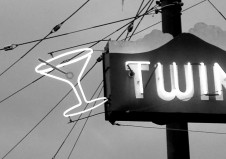
Semiotics of Sab
Semiotics of Sab
By Tina Takemoto
(USA, digital video, b/w, sound, 05:35) “An oblique portrait of gay Japanese American actor Sab Shimono, whose work on stage and screen spans more than five decades. The grammatology of his career attests to conflicting lexicons of race, representation, and selfhood.” (Tina Takemoto)
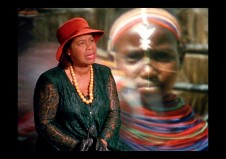
Halimuhfack
Halimuhfack
By Christopher Harris
(USA, 16mm transferred to digital video, color, sound, 2016, 4:00) “A performer lip-synchs to archival audio featuring the voice of author and anthropologist Zora Neale Hurston as she describes her method of documenting African American folk songs in Florida. By design, nothing in this film is authentic except the source audio. The flickering images were produced with a hand-cranked Bolex so that the lip-synch is deliberately erratic and the rear projected, grainy, looped images of Masai tribesmen and women recycled from an educational film become increasingly abstract as the audio transforms into an incantation.” (Christopher Harris)
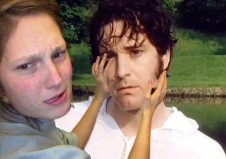
Take Me to Pemberley
Take Me to Pemberley
By Daniela Zahlner
(Austria, digital video, color, sound, 2015, 02:00) “Mr. Darcy: The synonym for the romantic hero since 1813, as he first appeared in Jane Austen‘s novel Pride and Prejudice. The book had several movie adaptations (especially prominent [were those from] 1940, 1995 and 2005), which not only inscribe Darcy’s character in popular culture, but also illustrate our capitalist notions of love and desire, as well as a wish for escapism into a pre-industrialized, pre-virtualized world. I, too, fell for Mr. Darcy. Thanks to my webcam and Photo Booth, I can finally have my go [at] winning him over.” (Daniela Zahlner)
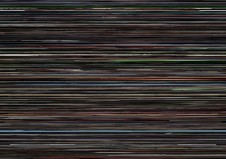
Every Feature Film On My Hard Drive, 3 Pixels Tall and Sped Up 7000%
Every Feature Film On My Hard Drive, 3 Pixels Tall and Sped Up 7000%
By Ryan Murray
(USA, digital video, color, sound, 2013, 3:29) “Every Feature Film On My Hard Drive, 3 Pixels Tall and Sped Up 7000% is comprised of 240 Hollywood movies running simultaneously, squeezed into a single frame and a 3.5 minute runtime. This work highlights the mass amount of media that we have at our fingertips and creates an abstraction of the color and duration of cinema.” (Ryan Murray)
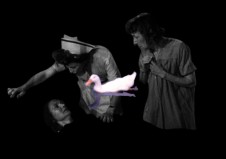
Actual Case History
Actual Case History
By Tony Gault
(US, 16mm transferred to digital video, color, sound, 2015, 09:00) “Rotoscope animation reshapes a found film into an examination of ‘the vague, indefinite fears which keep growing in our minds.’” (Tony Gault)
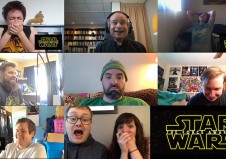
Official Teaser #2 Reaction!!!
Official Teaser #2 Reaction!!!
By Kevin McCarthy
(US, digital video, color, sound, 2016, 6:30)
“When the second teaser for THE FORCE AWAKENS comes out, a STAR WARS agnostic tries in vain to embrace the zeitgeist, joining superfans to create his own lukewarm trailer reaction video mashup.” (Kevin McCarthy)
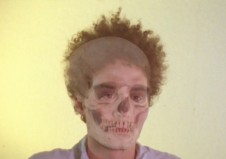
Sneeze
Sneeze
By Yunjin Woo
(USA, 16mm/found footage transferred to digital video, color, sound, 2015, 05:11) “Sneeze explores the stigmatized symptom of common cold—the involuntary expulsion of air and bodily fluid—as an allegory of social ruptures that might mediate infectious resistance. Mixing the Cold War era’s educational film footage promoting personal hygiene as a ‘war against germs’ with images of explosive creation, this film aesthetically subverts the uniquely modern fantasy of separation and isolation of the ‘healthy’ from the ‘ill’.” (Yunjin Woo)
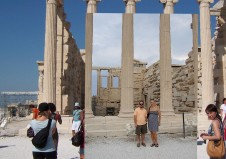
A Place I’ve Never Been
A Place I’ve Never Been
By Adrian Flury
(Switzerland, digital video, color, sound, 2015, 04:40) “By sourcing multiple digital images of the same place from different archives, this experiment in film makes use of frame by frame montage to discover hidden forms, patterns and references, thereby giving new meaning to the prevailing redundancy of these pictures.” (Adrian Flury)
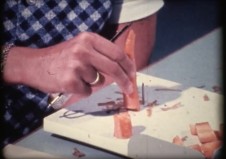
[sic] series
[sic] series
By Roger Beebe
(US, 16mm transferred to digital video, color, sound, 2014, 04:25) “Three perfect fragments, presented exactly as found.” (Roger Beebe)
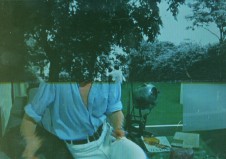
Somebody was Trying to Kill Somebody Else
Somebody was Trying to Kill Somebody Else
By Benjamin Verhoeven
(Belgium, digital video, color, sound, 2014, 06:11) “Part of an ongoing project called Scanning Cinema [that consists] of scanning moving images by using a flatbed scanner and a monitor and putting them back into an animated film. The inversions [produced by this] method (the physical action of scanning) [generate] a new language like a disturbed echo from the photographic reviving of moving images. […] The fragments … used [here] are a re-montage of Michelangelo Antonioni’s Blow-Up, [while] the original soundtrack of Herbie Hancock has undergone the same process as the images. The movie consists of 10,000 scans put together in a stop-motion film.” (Benjamin Verhoeven)
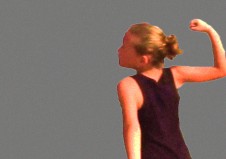
Cut Out
Cut Out
By Guli Silberstein
(Israel/Palestine, digital video, color, sound, 2014, 04:19) “A radiant, energetic girl is shouting and punching the empty space in front of her. She is roughly cut out from her surroundings by a computer algorithm struggling to contain her. Her enemies are rubbed off the frame, sound is removed and music added, emphasising her anguish and anger. Is she real? Is she a dream? Gradually, more fragments of the scene are revealed, and the context is made clearer. The video-processing highlights the documented scene as image, both of a fight for freedom, and a media event.” (Guli Silberstein)
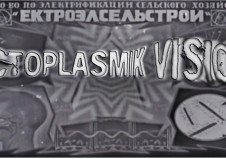
Ectoplasmik Vision
Ectoplasmik Vision
By Ricardo Salvador
(Spain, Super-16mm transferred to digital video, b/w & color, sound, 2016, 09:40) In 1965, the compendium of an earthly life devoted to scientific research was found in Kresty prison of Leningrad, encrypted in twelve vinyl records printed with stroboscopic images and hypnotic sounds, labeled with the name “HK320.” Ektoplasmic Vision tells the story of Dr. Joseph H. Stanislaw, a mad scientist of dubious provenance, who claimed to be a Nephilim (half human half demon). During his earthly passage (1888-1944), Dr Stanislaw investigated the human mental projection, and designed his own devices to print and reproduce on “Ektoplasmic film” the images created by the spheres of mind. Ectoplasmik Vision is the documentary promotion along with the official trailer for Hermetica Komhata HK320, a retro Sci-fi film, 90 minutes long, recently produced by Hermética Films.” (Ricardo Salvador)
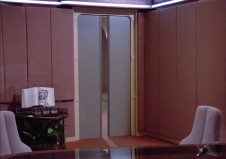
The Neutral Zone
The Neutral Zone
By LJ Frezza
(USA, digital video, color, sound, 2015, 06:40) “A survey of the utopias featured in Star Trek: The Next Generation (1987-1994). Some of the structures that constrain and produce our understanding of possible futures.” (LJ Frezza)
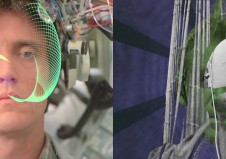
Doppelgänger
Doppelgänger
By Tasman Richardson
(Canada, digital video, b/w & color, sound, 2016, 14:25) “Imperfect reflections, simulations, and recordings, sampled from cinema, vhs, and finally total signal failure. Originally performed live as a dual, parallel projection (mirrored). All sounds are from the source clips. harmonies and rhythms are achieved with complex combinations of temporal warping and editing of the video source.” (Tasman Richardson)
